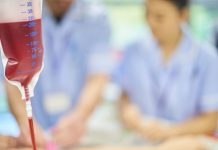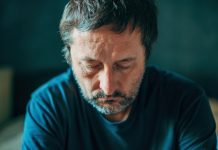Insights into the forensic treatment of teenagers and adolescents at Pfalzklinikum are given here by Laura Kirschbacher
The forensic treatment of young people is an area of conflict: between rules and educational work, on the one hand, and the opportunities for teenagers’ and adolescents’ personal development, on the other hand. Between reform and safeguarding, between educational missions and instructions for building up relations. Between these conflicting priorities is also the social therapeutic ward (ST, for short, or JMRV, forensic treatment of teenagers and adolescents) at Pfalzklinikum in Klingenmünster. Treated in forensic institutions are persons regarded as not criminally responsible or having only reduced criminal responsibility, who are expected to still act dangerously and where a connection between criminal offence and mental disorder exists.
Forensic treatment in Germany
In Klingenmünster, about 20 persons aged 16 to 23 are institutionalised1, either according to § 63 StGB, the Criminal Code of the Federal Republic of Germany, in a psychiatric hospital or according to § 64 StGB in a detoxification centre. The law applied is juvenile criminal law with the goal of resocialisation. And even though forensic treatment in Germany is the domain of each state, there is one general principle: teenagers and adolescents convicted, according to the Juvenile Court Act are to be institutionalised separately from adults. In Klingenmünster, this means being separated from the forensic clinic for adults and connected to the clinic for child and adolescent psychiatry, psychosomatics and psychotherapy. In this way, the latest standards of psychiatric and psychotherapeutic treatment of teenagers and adolescents are met, and the special needs of teenagers and adolescents are taken into account. Like all clinical Pfalzklinikum institutions, JRMV also has a dual management structure: Dr Wolfgang Weissbeck is Head of Forensic Treatment for Teenagers an Adolescents (Unterbringungsleiter des JMRV), Ralf Dreisigacker is the Team Leader with an educational and nursing background.
So much about the roughly outlined legal background – but I want to get to know their everyday lives and, therefore, accompany the ST team for one day. First, the team leader, Ralf Dreisigacker, leads me through the different wards: with intensely secured, secured and open areas as well as apartments for the preparation of a discharge ST represents large forensic institutions on a small scale. Ward rounds have just ended, and while the team is meeting for peer consulting, the adolescents are having school or German classes, therapeutic one-to-one conversations, occupational therapy, doing an internship outside or simply enjoying free time during the morning. A glance at the weekly schedules reveals how a structure is established by offers of activity, without overloading the adolescents with too many appointments.
An educational mission
As the Head of Forensic Treatment for Teenagers an Adolescents, Dr Wolfgang Weissbeck explains, all this happens in view of the fact that they have an educational mission, on the one hand, and the special development tasks of the persons spending their youth in the institution are to be heeded, on the other hand. He adds that as early as possible, the relaxing phase “taking out” is thus granted to avoid hospitalisation and training in everyday life accompanied by a staff member. The primary goal of special therapy offers, criminal offence work and prevention to reduce the risk of reoffending and, in doing so, considers individual risks to be avoided in the future. Where possible, relatives are included in therapy offers.
Young people institutionalised here still have their lives ahead of them and will be prepared to live a crime-free life. Many institutionalised persons of this age lack life experience beyond a certain milieu, often they have not been to school for a long time, they lack maturity and show increased impulsivity. They consider education a penalty and for this reason, it is easier to get through to them by building up relations. It is this educational mission that makes the difference between the forensic treatment of teenagers and adolescents, as well as the forensic treatment of adults.
Everyday life in ST is, therefore, a continuous weighing up of the necessary rules and the freedom needed to mature individually. For example, the rule that no violence-glorifying music is permitted, but the freedom to express one’s own experiences through rap texts isn’t. Everyday life also implies learning everyday activities: in the laundry room the washing machine is spinning, in the lounge; two adolescents are laying the table for lunch. A young man proudly shows me his works produced in art therapy; another man is brooding over a crossword puzzle. Indeed, with one exception, all teenagers and adolescents living in the ward are male, the rate of female institutionalised persons in forensic institutions in Germany is 4-5 % according to Dr Wolfgang Weissbeck.2
Around noon, a new arrival comes from the Schifferstadt juvenile detention centre. He was transferred to Klingenmünster for a withdrawal therapy. Admissions to ST do not happen all that often and, in most cases, they are scheduled. First, a psychotherapist explores him, then the group leader familiarises him with the premises, organisational procedures, attitude within the institution (“non-violent space”) and ward rules. Later, a talk by Dr Weissbeck is taking place. Afterwards, the young man is being assigned to one of the areas. Another topic on the agenda that day is the team meeting in which the steps of relaxation and the requests for relaxation are discussed. Provided that the teenagers/adolescents are present, the decisions are explained to them immediately. To me, it seems, therefore, that the procedure is very transparent, and the staff have a caring attitude. By carrying out patient surveys of his own and reviewing them with the adolescents afterwards, Dr Weissbeck, Ralf Dreisigacker and their team show how important patient orientation is to them. Once a week, the adolescents have the opportunity to express wishes, praise and criticism during the department conference.
Having spent a day on the ST wards, I have great respect for the people working there, living multi-disciplinarily and, as it seems to me, managing to develop good relations with the young. ST is known and honoured for different projects developed thanks to the staff members’ commitment. Among these projects are their own radio station, a band, and a beekeeping project. The employees have to meet specific requirements; they are trained in DBT-A (dialectical behaviour therapy for adolescents) or DBT-F (dialectical behaviour therapy for forensic patients), two de-escalation trainers belong to the team, and they all have in common that they look at the adolescents in a resource-orientated and appreciative way. This also requires supervision and an aftercare concept following stressful situations.
ST is forensic treatment, but it is also a living group, it is therapy, but it also concerns practising everyday life, and it has a great responsibility for the long life that is often awaiting the adolescents in the future.
References
1 The term adolescent is used in this text when referring to institutionalised persons whose age corresponds roughly to the nationwide average age of teenagers and adolescents in forensic clinics. In JMRV in Klingenmünster, persons aged 14 to 21 can be admitted but the upper age limit is flexible so that young people on the road towards discharge must not necessarily change into the forensic clinic for adults.
2 For more information on Forensic Treatment of Young People in Germany (in German): Dr. Wolfgang Weissbeck: Jugendmaßregelvollzug in Deutschland: Basisdokumentation, Einrichtungen, Konzepte. 2009; MWV Medizinisch-Wissenschaftliche Verlagsgesellschaft.
Please note: This is a commercial profile
© 2019. This work is licensed under CC-BY-NC-ND.











